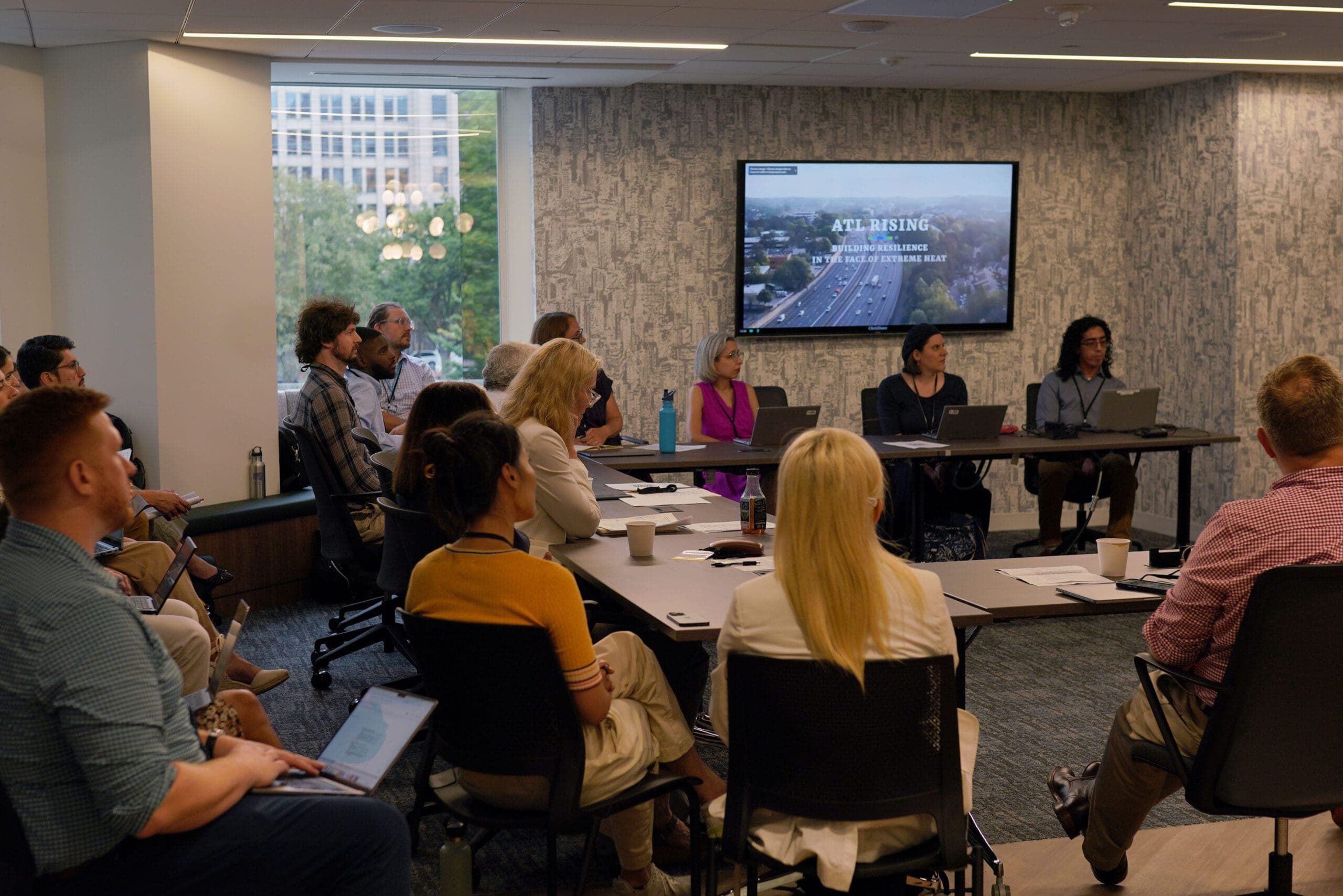
News
By Joseph Mendonca, August 8, 2024
This July, SGA hosted the Smart Growth Network (SGN), a national coalition of smart growth-oriented organizations, in its offices for the coalition’s Summer 2024 Quarterly Discussion. The discussion focused on extreme heat, which has been especially prevalent globally in recent years, and the role that smart growth, urban forests, and community organizing can play in addressing inequities in how extreme heat is felt by communities. The convening was closed with a discussion and sharing of resources regarding ongoing heat-related resilience efforts by SGN partners.

The Smart Growth Network, formed in 1996, brings together public, non-profit, and private organizations working to advance smart growth to support healthy, prosperous, and resilient communities across the U.S. The Network provides opportunities for partners to share resources and information with other like-minded organizations and for collaboration in supporting and leading the smart growth movement.
The Network’s Quarterly Discussions provide one such space. This most recent Quarterly Discussion, hosted by SGA and organized together with the EPA Office of Community Revitalization, was centered on resilience to extreme heat and how smart growth can contribute to these efforts.
Discussion Themes, Highlights, & Takeaways
The discussion was kicked off with remarks from Joel Scheraga, Senior Advisor for Climate Adaptation from the EPA, and Danielle Arigoni, and SGA Board Member and Managing Director for Policy & Solutions at the National Housing Trust. Both highlighted the dangers that extreme heat poses, especially to specific communities, like the elderly. They also discussed many of the recent steps that have been taken to address extreme heat at the federal level, including, for example, the establishment of EPA’s Office of Climate Adaptation and Sustainability, which provides technical assistance to communities to boost climate resilience.
These remarks were followed by a panel of experts on extreme heat: Dexter Locke, from the USDA Forest Service; Joshua Simon, from American Forests; and Shana Udvardy, from the Union of Concerned Scientists. Moderated by Katharine Burgess, SGA’s Vice President of Land Use & Development, the panel began with a discussion clearly linking the extreme heat we’re seeing more often to the effects of climate change. More importantly, much of the panel focused on the role urban forests, green spaces, and tree canopy can play in alleviating the effects of extreme heat, as well as how the inequities in how these resources are distributed make already underserved communities feel the heat even more. Formerly redlined areas, where many communities of color are still concentrated today, tend to have a greatly reduced tree canopy and much higher temperatures. However, because most trees are located on private property, it’s difficult to organize a cohesive, community-wide tree canopy policy or program. Although support for urban trees exists from federal sources like the Greenhouse Gas Reduction Fund and other Inflation Reduction Act programs, much more funding is necessary to address extreme heat.
Extreme Heat Resources
The Quarterly Discussion concluded with breakout groups that allowed SGN partners to discuss their extreme heat-related work and to share resources and opportunities for collaboration. These resources are listed below:
- NOAA provides a HeatRisk forecast through the National Weather Service; leads the National Integrated Heat Health Information System, which developed a Maturity Model for Heat Governance; and manages the Climate Adaptation Partnerships Program which has a portfolio of extreme heat work including a heat resilience toolkit in North Carolina.
- Skalen, an organization using geospatial data analysis to support climate resilience, will soon be releasing a report on the social and community impacts of extreme heat in New York City.
- The Urban Land Institute has a clearinghouse for urban climate resilience strategies and has released a report on extreme heat and land use.
The American Council for an Energy-Efficient Economy participates in the Smart Surfaces Coalition and has published an article highlighting how smart surfaces can boost urban climate resilience. - The American Public Health Association’s Cities for Smart Surfaces Project, developed with the Smart Surfaces Coalition, works to explore how smart surfaces can help mitigate the health effects of climate change on communities. They also have an Extreme Heat Resource Hub.
- The EPA’s Climate Change Adaptation Resource Center provides resources to local governments to help them prepare for the impacts of climate change in their communities.
- The EPA also manages the Environmental Justice Thriving Communities Technical Assistance Centers Program to help communities navigate grant applications, create and maintain communication channels, and boost community engagement. The Local Foods, Local Places also supports urban green spaces and community gardens.
- USDOT’s PROTECT Grant, funded by the Bipartisan Infrastructure Law, which supports efforts to make surface transportation infrastructure more resilient to the effects of climate change.
- The Maryland Department of Planning is hosting the Sustainable Growth Webinar Series, which will include a webinar on August 20 focusing on extreme heat.
- The federal government’s Subcommittee on Climate Services, which focuses on topics relevant to the Network.
Related News

© 2026 Smart Growth America. All rights reserved
Site By3Lane Marketing














